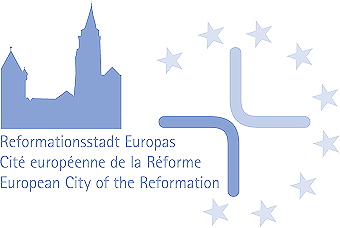PROJEKT DORDRECHTER SYNODE 1618/19
Kritische Edition der Akten und Dokumente zur Dordrechter Synode 1618/19
Bedeutung der Synode
Die nationale Synode in Dordrecht 1618/19 war sowohl für die Niederlande als auch international von großer Bedeutung für die reformierte Gemeinschaft.
Die Niederlande
Aus politischer Sicht sorgte die Synode für ein Ende der sozialen Unruhen, die aus dem Konflikt zwischen Remonstranten und Contraremonstranten entstanden waren. Dies war ein auf allen Ebenen bedeutender Konflikt, angefangen bei den Bürgern und ihren Spottliedern (Bavianen en Slijkgeuzen) bis zur höchsten politischen Ebene, wie etwa bei den Spannungen zwischen Statthalter Moritz und dem Landsadvokaten Johan van Oldenbarnevelt. Als nationale Synode unterstützte die Synode von Dordrecht zudem den Prozess der Nationalstaatbildung unter Beteiligung von Regionen und Staaten, die bis dahin relativ unabhängig agiert hatten.
International
Die Dordrechter Synode ist, zusammen mit der Westminster Assembly (1643-1649), eine der wichtigsten Kirchenversammlungen in der Geschichte der reformierten Kirche. Internationale Delegierte aus verschiedensten Teilen Europas (Großbritannien, Pfalz, Hessen, Schweiz, Nassau-Wetterau, Genf, Bremen und Emden) waren wichtige Teilnehmer an der Synode und spielten eine bedeutende Rolle in der Begutachtung der remonstrantischen Lehre und in der Formulierung der Lehrregeln. So hatte die Synode eine ausgeprägt internationale Färbung. Ihre weitreichende internationale Bedeutung ist heute noch zu spüren. Reformierte Gläubige aus aller Welt kennen Dordrecht als den Tagungsort der Synode und den Ort, an dem die Lehrregeln von Dordrecht als allgemeingültiges Glaubensbekenntnis akzeptiert wurden, welches noch heute von reformierten Kirchen niederländischer Tradition in aller Welt befolgt wird. Die fünf Kapitel der Lehrregeln, die ihre Form von den fünf Glaubensgrundsätzen der Remonstranten beziehen, sind die Grundlage der sogenannten „Fünf Punkte des Calvinismus“ (im Englischen auch weltweit als Akronym TULIP bekannt), welche den Calvinismus von anderen theologischen Strömungen, und insbesondere von seinem genauen Gegenteil, den Arminianern, unterscheiden. Schließlich übte die Kirchenordnung von Dordrecht auch einen weltweiten und bleibenden Einfluss auf die Kirchenordnungen und kirchenrechtliche Praxis der Reformierten Kirchen aus. Auch die Beschlüsse zur Bibelübersetzung und zum Katechismusunterricht haben Leben und Lehre der Reformierten Tradition in vielen Teilen der Welt bis heute geprägt.
Das Editionsprojekt
Angesichts der zahlreichen (kirchlichen und theologischen) Streitfälle, bei denen die Lehrregeln von Dordrecht im Laufe der Jahrhunderte eine wichtige Rolle gespielt haben, sowie der umfangreichen Sekundärliteratur zur Synode und der andauernden weltweiten historischen Bedeutung der Lehrregeln und Kirchenordnung der Synode, ist das Fehlen einer kritischen wissenschaftlichen Ausgabe von der Mehrheit der zur Zeit der Synode verfassten Dokumente bemerkenswert.
Partner-Institutionen
Johannes a Lasco Bibliothek, Emden
Huygens Instituut/ NIG
Institut für Schweizerische Reformationsgeschichte Zürich
Remonstrantse Broederschap
Theologische Universität Apeldoorn
Stadt Dordrecht
Vrije Universiteit Amsterdam
Protestantse Kerk Nederland
Projektleiter
Herman J. Selderhuis
Herausgeber
Herman J. Selderhuis, Christian Moser and Don Sinnema
Redaktionsleitung
Tjaard Barnard, Nicolas Fornerod, J. Marius J. Lange van Ravenswaay, Fred van Lieburg, Anthony Milton, Peter Opitz, Joke Roelevink (†)
Critical Edition of the Documents of the Synod of Dordrecht 1618/19
Significance of the Synod
The National Synod of Dordrecht 1618/19 was of great significance for the Netherlands as well as for the international reformed community:
The Netherlands
From a political perspective, the Synod brought an end to the social unrest that had arisen out of the conflicts between Remonstrants and Counter-Remonstrants. This was a significant case on all levels, starting with the common citizens and their songs of mockery (‘Baboons and Mud Beggars,’ or Bavianen en Slijkgeuzen) and reaching up to the highest political level as in the tensions between the Stadtholder Maurice and the Land’s Advocate Johan van Oldenbarnevelt. As a national synod, the Synod of Dordrecht provided a boost to the national unification process involving regions and states that up to that time had remained relatively independent. From a religious and ecclesiastical perspective, the Canons of Dordrecht brought an official end to the theological debates that had dragged on for over a decade. The narrowing of orthodoxy in the Canons of Dordrecht, and the related departure of the Remonstrants, strengthened the internal unity of the Reformed church and further established its public role as the church privileged by the state. The Synod thus formed a provisional end to the process of consolidation experienced by the Reformed church in the United Provinces of the Netherlands after its inception in the Revolt against Philip II of Spain. As one of the Three Forms of Unity, the Canons of Dordrecht to this very day function as a confessional document of the Reformed churches. It has played an important role in numerous ecclesiastical and theological conflicts in the Netherlands over the course of the last four centuries. The Church Order of Dordrecht, which was a consolidation of earlier church orders, regulated the structure of the Dutch Reformed churches for two centuries until 1815 (and even longer in the churches that separated from the Dutch State Church), and was very influential for later church orders as well. The synod also made important pronouncements on a variety of church issues (e.g. Sunday observance, catechism instruction, and theological education) and commissioned the Statenbijbel which would appear in 1637.
Internationally
Along with, for example, the Westminster Assembly (1643-1649), the Synod of Dordrecht is one of the most important church councils in the history of the Reformed tradition. International delegates from throughout Europe (Great Britain, the Palatinate, Hesse, Switzerland, Nassau-Wetteravia, Geneva, Bremen, and Emden) served as important participants and played a significant role in the evaluation of Remonstrant doctrine and in the formation of the Canons. This also gave the Synod a distinct international flavour. Its international significance continues to be felt today, as Reformed believers throughout the world know Dordrecht as the place where the Synod met and where the Canons of Dordrecht were accepted as a confessional standard that continues to be maintained throughout the world by Reformed churches of Dutch heritage. The five chapters or heads of doctrine of the Canons, which took their shape in reaction to the five articles of the Remonstrance (1610), form the background to the so-called ‘Five points of Calvinism’ (TULIP) as an acronym that is recognized throughout the world as separating ‘Calvinists’ from other theological currents, and especially from the ‘Arminians’, who are considered their polar opposite.
The edition project
Given the countless (ecclesiastical and theological) disputes in which the Canons of Dordrecht have played a role over the course of the centuries, the significant body of secondary literature that has grown around the Synod, and the continuing worldwide historical significance of the Synod’s Canons and Church Order, the absence of a scholarly critical edition of the majority of documents composed at the time of the Synod is remarkable.
Partner institutions
Johannes a Lasco Library , Emden
Huygens Instituut/ NIG
Institut für Schweizerische Reformationsgeschichte Zürich
Remonstrantse Broederschap
Theological University Apeldoorn
City of Dordrecht
Vrije Universiteit Amsterdam
Protestantse Kerk Nederland - PKN
Project Director
Herman J. Selderhuis
General editors
Herman J. Selderhuis, Christian Moser and Don Sinnema
Editorial Board
Tjaard Barnard, Nicolas Fornerod, J. Marius J. Lange van Ravenswaay, Fred van Lieburg, Anthony Milton, Peter Opitz, Joke Roelevink (†)

